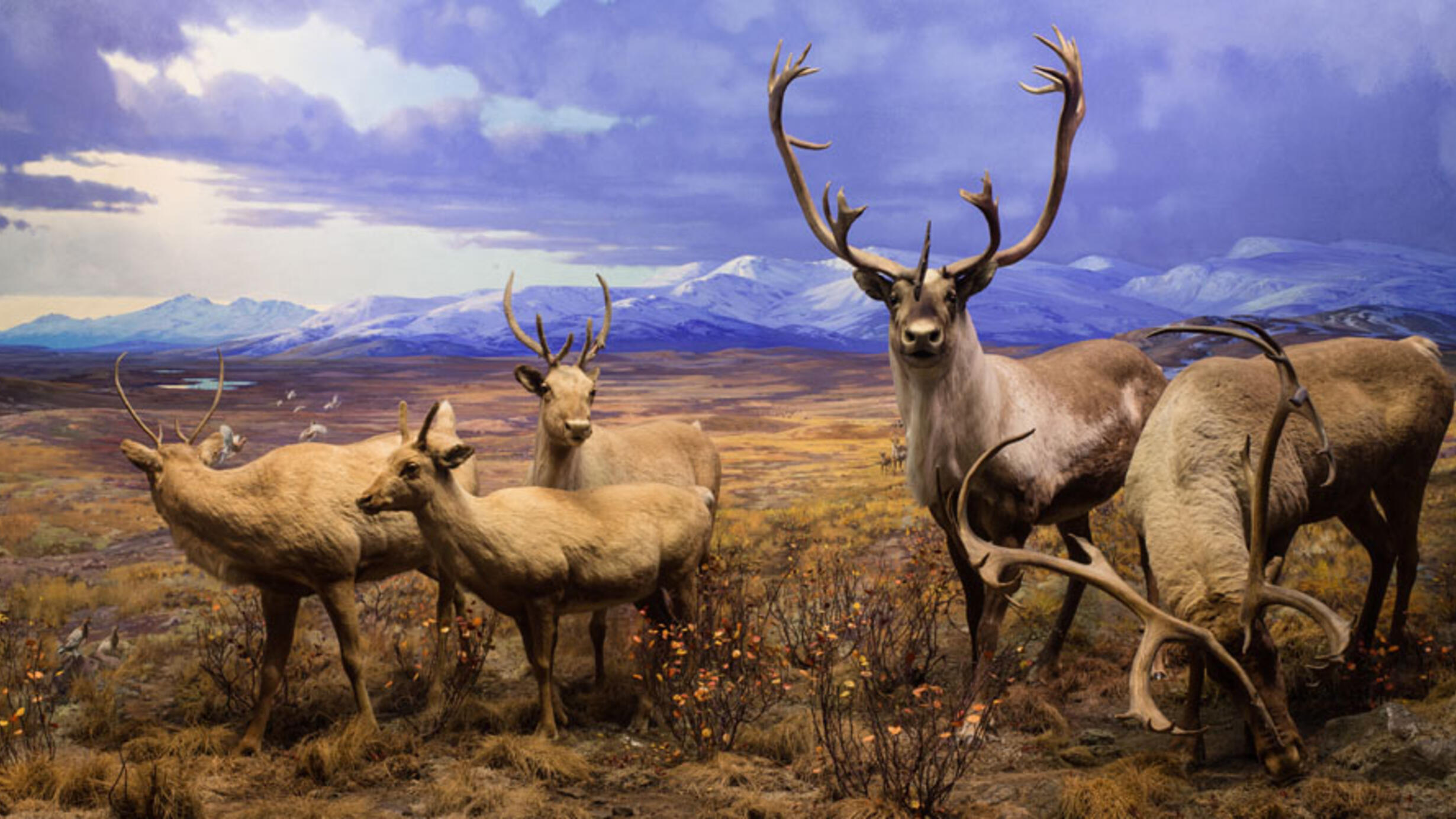Caribou
Part of Hall of North American Mammals.

September, Level Mountain
British Columbia, Canada
The mating season for caribou, called the rut, has begun. Herd members are gathering in the open so they can find and compete for mates. At any other time of year, these two females and the juvenile (left) would probably avoid males (right).
Two caribou here have not yet shed their antlers’ velvet. This fuzzy, blood-rich sheath of skin nourishes growth of the bone beneath. Caribou drop their antlers after the rut, but if these two females become pregnant, they will probably keep their antlers all winter. Antlered mothers can better defend themselves when competing for winter food—an advantage for their developing young.
Level Mountain
Northwest British Columbia, Canada
September storm clouds loom over this high plateau in British Columbia’s volcanic northwest. Peaking at 7,185 feet (2,190 meters), Level Mountain’s broad slope is a tundra environment—treeless, windy and severe in wintertime. Although caribou living further north in the Arctic must migrate thousands of miles to escape tundra winters, mountain caribou like these simply walk downhill in winter. There they find warmer forests where their main winter food, lichens, is less covered in snow. When spring comes they migrate back upslope in search of new green growth.